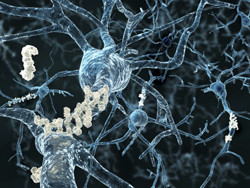Membrane activity in amyloidosis
Amyloidosis-associated diseases are characterised by aberrant folding of native proteins into fibril polymers. Increasing evidence indicates that the progressive accumulation of these protein aggregates in cells or tissues is linked to disease pathology. Despite the broad spectrum of amyloidosis-related diseases and the unrelated function of the proteins that get misfolded, the resulting aggregates have a common fibrillar structure. This similarity implies that different diseases may manifest from similar mechanisms of cytotoxicity. With this in mind, the EU-funded 'Membrane activity of amyloid fibrils: unravelling cell killing mechanism' (AMYLOID) study set out to investigate the impact of amyloid fibrils on cell function. In particular, researchers concentrated on the association of protein aggregates with cellular membranes. To this end, they used beta2-microglobulin (b2m), a member of the immunoglobulin superfamily as a model system of amyloidosis. Misfolded b2m is seen in dialysis-related amyloidosis, a rare disorder affecting 700 000 patients worldwide. Using fluorescence spectroscopy, researchers found that b2m fibrils disrupt cell membrane lipids, thereby hampering membrane integrity and rendering it permeable to water-soluble molecules. With the aid of an electron microscope, they visualised membrane damage and subsequent formation of small vesicles at the nanometer level. The extent of cytotoxicity depended on fibril fragmentation and interestingly, amyloid fibrils exhibited an enhanced affinity for lysosomal membranes. This result provided an explanation of the dysfunction of lysosomes in amyloidosis-related diseases. To address the issue of protein aggregate sequestration, scientists tested biomolecules (glycosaminoglycans and polyphenols) known for their ability to modulate fibril formation. Among the compounds screened, heparin proved to be the most powerful in suppressing fibril-induced membrane damage. Collectively, the results of the AMYLOID project provide a deeper understanding of fibril-membrane association and the mechanism behind fibril-mediated pathology. Furthermore, innovative therapeutic strategies were discovered that could be explored to ameliorate amyloid disorders.







